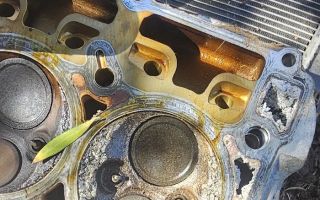How to Repair a Punctured Tire with a Tire Plug: A Step-by-Step Guide
Flat tires are one of those unexpected annoyances that can disrupt your day. Whether you’re on the highway or in your driveway, getting a punctured tire is never convenient. But before you call roadside assistance or rush to the tire shop, you might want to consider a quick fix—repairing the punctured tire with a tire plug. This method is often effective for small punctures and can help you get back on the road in no time. In this article, I’ll walk you through the entire process, explaining how to repair a punctured tire with a tire plug, the tools you’ll need, and tips for ensuring a safe and lasting repair.

MR. TIRE INC.
2078 New York Ave, Huntington Station, NY 11746, USA
1. Understanding the Basics of Tire Plugging
When I first learned about tire plugging, I wasn’t sure how effective it would be. It sounded almost too simple to be true—poke a plug into a punctured tire, and you’re good to go. However, after trying it for myself, I realized just how useful this method is for small punctures caused by nails, screws, or other sharp objects. A tire plug is a rubber or rubberized compound that seals a hole in the tire, preventing air from leaking out. The plug essentially fills the puncture, and once inserted properly, it can restore tire pressure and get you back on the road.
However, there are some things to keep in mind. Tire plugs are best suited for minor punctures that are in the tread area, as opposed to the sidewall or shoulder of the tire. If the puncture is too large or in a critical area, it’s always best to consult a professional or consider replacing the tire. But for small, manageable punctures, a tire plug can be an excellent solution.

MR. TIRE INC.
2078 New York Ave, Huntington Station, NY 11746, USA
2. Tools You’ll Need for the Job
Before you begin, you’ll need to gather a few essential tools. These items are necessary for a proper tire plug installation. Here’s what you’ll need:
- Tire Plug Kit: This kit includes the plugs themselves, a reamer tool (to widen the puncture), and an insertion tool (to insert the plug). Most kits are available at auto parts stores or online.
- Air Pump or Compressor: You’ll need this to check the tire pressure once the plug is installed. Ideally, you’ll want to inflate the tire to the recommended pressure before continuing with your drive.
- Gloves: Tire repair can be a dirty job, so it’s a good idea to wear gloves to protect your hands from dirt and oil.
- Water or Soapy Solution: A simple soapy water solution can help you locate the puncture and ensure that you’ve fully sealed it once the plug is in place.
- Jack and Jack Stands: If you need to lift your car to remove the tire, a jack and stands are essential for safety. If you’re working with a spare tire, these tools will be necessary.
3. Preparing the Punctured Tire
The first step in repairing a punctured tire with a plug is to locate the puncture. This is where a soapy water solution comes in handy. If you’re unable to see the puncture, spray some soapy water around the tire, especially the area where you suspect the hole. The water will bubble up at the site of the puncture, helping you identify the exact location. Once you find the puncture, mark the area so you can focus on it during the repair.
If your car is still on the ground and the puncture is not easily accessible, you’ll need to jack up the car and secure it with jack stands for safety. Make sure the car is stable before moving on to the next steps. Remove the wheel and tire from the vehicle if necessary, and inspect the puncture to ensure that it’s something you can repair with a tire plug.
4. Reaming the Puncture
Once you’ve identified the puncture, it’s time to widen the hole using the reaming tool. This tool is included in most tire plug kits, and its purpose is to prepare the hole for the plug. The reamer tool removes any debris from the hole and creates a smooth, even surface for the plug to adhere to. Gently push the reamer tool into the puncture and twist it to widen the hole. Be sure to only ream the puncture enough to allow the plug to fit snugly. You don’t want to enlarge the hole too much, as that could make the repair less effective.
5. Inserting the Plug
Now comes the crucial step—insert the plug. The plug should be loaded into the insertion tool, which is another component of your tire plug kit. Once the plug is properly loaded, position the tool over the puncture and carefully insert the plug into the hole. You’ll need to push firmly to get the plug all the way into the tire. It’s important to make sure that the plug is inserted evenly so that it can create a proper seal. The plug should extend slightly out of the hole on both sides, but avoid leaving too much sticking out, as this can cause the plug to come loose over time.
After the plug is inserted, carefully pull the insertion tool out of the tire. The plug should remain in place, sealing the puncture. At this point, you can trim any excess plug material to make the surface of the tire smooth and even. Be sure to leave enough of the plug in place to maintain the seal.
6. Checking for Leaks and Reinflating the Tire
Once you’ve inserted and trimmed the plug, it’s important to check for leaks. Spray some soapy water around the area where the plug was inserted and watch for any bubbles. If you see bubbles, the plug hasn’t sealed properly, and you may need to try again or consider a different type of repair. If no bubbles appear, you’ve successfully sealed the puncture!
Now, it’s time to reinflate the tire. Use an air pump or compressor to fill the tire back to the manufacturer’s recommended pressure. Check the pressure carefully, as under-inflating or over-inflating the tire can be dangerous. Once the tire is at the correct pressure, reattach it to your car if you’ve removed it and lower the vehicle back to the ground.
7. When to Seek Professional Help
While tire plugs can be an effective DIY repair for small punctures, they’re not always a permanent fix. If you’ve tried a plug and the tire continues to lose air or the puncture is in a critical area like the sidewall, it’s time to seek professional help. A professional mechanic can assess the damage and determine if a tire patch or replacement is necessary. In cases of larger punctures or damage, a plug may not be sufficient, and you might be better off replacing the tire to ensure your safety on the road.
If you’re ever in doubt about your ability to repair the tire yourself, don’t hesitate to reach out to a reliable towing service for assistance. Many towing companies offer roadside tire repair services, including plugging tires and replacing flat tires, which can be a great option if you’re stranded on the side of the road.
Where to Get Help
If you’re not confident in your tire repair skills or prefer not to tackle the job on your own, don’t worry! Many roadside assistance and towing companies offer fast and reliable tire repair services. Rescue & Towing is one such service provider, offering efficient and affordable assistance in emergencies. Whether you’re stuck on the side of the road or need a quick fix at home, professionals are always ready to help you out. You can call them for immediate support and ensure your safety on the road without the hassle of DIY repairs.























